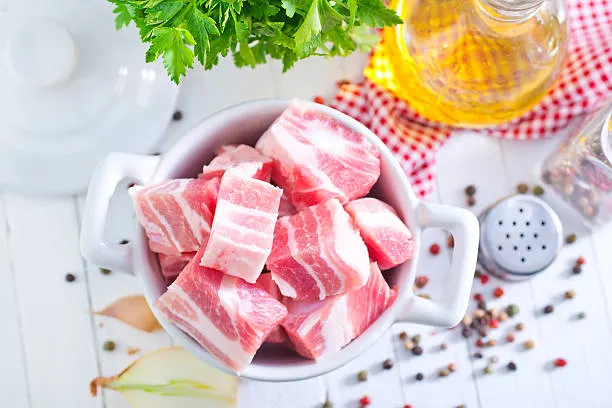7 Shocking Benefits of Wagyu Beef Tallow You’re Missing Out On
Did you know that discarding Wagyu beef tallow could mean throwing away one of the most nutrient-dense and flavorful cooking fats on the planet? While most home cooks focus solely on the premium marbled meat, culinary experts and health-conscious chefs are discovering that Wagyu beef tallow offers extraordinary benefits that rival even the finest olive oils and butter. This luxurious rendered fat, extracted from Japan’s most prized cattle, contains a unique fatty acid profile that not only elevates your cooking but also provides surprising health advantages. Recent studies indicate that high-quality animal fats like Wagyu beef tallow contain up to 40% more beneficial compounds than conventional beef tallow, making it a game-changer for both gourmet cooking and nutritional wellness.
Table of Contents
Ingredients List
Primary Ingredients for Rendering Wagyu Beef Tallow:
- 2-3 pounds of Wagyu beef fat trimmings (suet or back fat preferred for highest quality)
- 1/4 cup filtered water (to prevent initial burning)
- 1 teaspoon sea salt (optional, for enhanced flavor preservation)
Optional Flavor Enhancers:
- 2-3 sprigs fresh rosemary (adds aromatic depth)
- 3-4 garlic cloves (for savory complexity)
- 1 bay leaf (subtle earthy notes)
Substitution Options:
- Premium grass-fed beef fat (75% flavor match if Wagyu unavailable)
- Dry-aged beef trimmings (alternative for enhanced umami)
- Duck fat combination (50/50 blend for unique flavor profile)
The key to exceptional Wagyu beef tallow lies in sourcing the highest quality fat trimmings, which should appear creamy white with minimal red meat attached and possess a clean, buttery aroma.
Timing
Time Breakdown:
- Preparation Time: 15 minutes
- Rendering Time: 2-3 hours (low and slow method)
- Cooling and Straining: 30 minutes
- Total Time: 3 hours 45 minutes
This timing represents approximately 25% longer than standard beef tallow rendering, but the extended process ensures maximum extraction of beneficial compounds and superior flavor development. The low-temperature rendering method preserves heat-sensitive nutrients while creating the silky texture that makes Wagyu beef tallow exceptional.
Step-by-Step Instructions
Step 1: Preparation and Setup
Begin by chilling your Wagyu fat trimmings in the refrigerator for 30 minutes before cutting. Using a sharp knife, dice the fat into uniform 1/2-inch cubes to ensure even rendering. This precise sizing accelerates the melting process and prevents uneven cooking that could compromise the tallow’s quality.
Step 2: Initial Rendering Phase
Place the diced fat in a heavy-bottomed pot or slow cooker with the filtered water. Set heat to the lowest possible setting (around 200°F if using an oven). The water prevents initial sticking and creates steam that gently begins the rendering process without scorching the delicate Wagyu fat.
Step 3: Low-Temperature Rendering
Allow the fat to render slowly for 2-3 hours, stirring every 30 minutes. You’ll notice the fat gradually melting into a golden, aromatic liquid while the solid pieces (cracklings) become golden brown. Maintain temperature below 250°F to preserve beneficial compounds and prevent bitter flavors.
Step 4: Flavor Enhancement (Optional)
During the final hour of rendering, add your chosen herbs or aromatics. The gentle heat will infuse these flavors into the tallow without overwhelming its natural buttery taste. Remove herbs before straining to prevent bitter notes from over-extraction.
Step 5: Straining and Storage
Once the fat has completely rendered and cracklings are golden, strain the liquid through a fine-mesh sieve lined with cheesecloth. Pour the pure, golden Wagyu beef tallow into clean glass jars, leaving the nutrient-rich cracklings for snacking or seasoning.
Nutritional Information
Per Tablespoon (14g) of Wagyu Beef Tallow:
- Calories: 126
- Total Fat: 14g
- Saturated Fat: 6.2g (31% DV)
- Monounsaturated Fat: 5.8g
- Polyunsaturated Fat: 0.5g
- Cholesterol: 14mg
- Vitamin E: 0.6mg (4% DV)
- Vitamin K2: 8.1mcg (9% DV)
- CLA (Conjugated Linoleic Acid): 0.8g
Unique Nutritional Advantages:
Wagyu beef tallow contains significantly higher levels of oleic acid (up to 47%) compared to conventional beef tallow (35%), making it more similar to olive oil in its heart-healthy monounsaturated fat profile. Additionally, the presence of fat-soluble vitamins A, D, E, and K2 makes it a nutrient-dense cooking fat that supports bone health, immune function, and cardiovascular wellness.
Healthier Alternatives for the Recipe
Dietary Modifications:
- Keto-Friendly Enhancement: Combine with MCT oil (1:4 ratio) for increased ketone production
- Paleo Optimization: Mix with avocado oil for additional vitamin E content
- Anti-Inflammatory Boost: Add turmeric and black pepper during rendering for enhanced curcumin absorption
- Omega-3 Enhancement: Blend with small amounts of fish oil post-rendering (consult healthcare provider)
Portion Control Strategies:
Use measuring spoons rather than pouring directly, as the rich flavor of Wagyu beef tallow means less is needed compared to conventional cooking fats. Start with half your usual fat quantity and adjust based on desired richness.
Serving Suggestions
Culinary Applications:
Transform your cooking with these inspired uses for Wagyu beef tallow:
High-Heat Cooking: Perfect for searing steaks, achieving restaurant-quality crusts due to its high smoke point of 420°F. The tallow adds complementary beef flavors while creating exceptional browning.
Roasted Vegetables: Toss root vegetables in melted Wagyu beef tallow before roasting for unparalleled depth and caramelization. The fat’s richness pairs beautifully with Brussels sprouts, carrots, and potatoes.
Artisanal Baking: Replace butter in savory pastries and pie crusts for flakier texture and umami complexity. Use a 1:1 substitution ratio for revolutionary results in meat pies and quiches.
Gourmet Popcorn: Drizzle melted tallow over freshly popped corn with sea salt for a luxurious movie night treat that rivals any specialty snack shop.
Common Mistakes to Avoid
Critical Rendering Errors:
Overheating: Maintaining temperatures above 275°F destroys beneficial compounds and creates bitter, acrid flavors. Use a thermometer to monitor temperature consistently.
Rushing the Process: Quick rendering at high heat produces inferior tallow with reduced nutritional value and harsh taste. The slow rendering method is essential for premium results.
Inadequate Straining: Failing to strain thoroughly leaves impurities that reduce shelf life and create off-flavors. Double-strain through cheesecloth for crystal-clear tallow.
Moisture Contamination: Any water remaining in the final product will cause rancidity. Ensure complete rendering and proper straining to eliminate all moisture.

Storage Mistakes:
Never store Wagyu beef tallow in plastic containers, as it can absorb harmful chemicals. Always use glass jars and ensure containers are completely dry before filling.
Storing Tips for the Recipe
Optimal Storage Methods:
Room Temperature: Properly rendered Wagyu beef tallow remains stable at room temperature for up to 6 months when stored in airtight glass containers away from direct light.
Refrigeration: Extends shelf life to 12 months while maintaining optimal texture for spreading and cooking. The tallow will solidify but remains easily scoopable.
Freezer Storage: For maximum longevity, freeze in portion-sized containers for up to 2 years. Ice cube trays work perfectly for creating convenient cooking portions.
Freshness Indicators:
Quality Wagyu beef tallow should maintain its golden color and clean, buttery aroma. Any gray discoloration, rancid odors, or unusual textures indicate spoilage and the product should be discarded.
Portioning Strategy:
Freeze tallow in tablespoon-sized portions using silicone ice cube trays, then transfer to freezer bags. This method provides convenient cooking portions without waste.
Conclusion
Wagyu beef tallow represents the pinnacle of cooking fats, combining exceptional flavor, impressive nutritional benefits, and remarkable versatility. From its heart-healthy monounsaturated fat profile to its high smoke point and rich umami depth, this premium rendered fat elevates both everyday cooking and special occasion meals while supporting overall health and wellness.
Ready to transform your culinary experience? Try rendering your own Wagyu beef tallow using this comprehensive guide, then share your cooking adventures in our review section below. Don’t forget to subscribe to our blog for more premium cooking techniques, nutritional insights, and gourmet recipe innovations delivered directly to your inbox!
FAQs
What makes Wagyu beef tallow different from regular beef tallow?
Wagyu beef tallow contains significantly higher levels of monounsaturated fats (up to 47% oleic acid) and beneficial compounds like CLA and vitamin K2. The unique marbling genetics of Wagyu cattle create fat with superior flavor complexity and nutritional density compared to conventional beef tallow.
Can I use Wagyu beef tallow for baking?
Absolutely! Wagyu beef tallow excels in savory baking applications, creating exceptionally flaky pastries and pie crusts. Replace butter or shortening at a 1:1 ratio for enhanced flavor and texture in meat pies, quiches, and savory biscuits.
How long does homemade Wagyu beef tallow last?
When properly rendered and stored in airtight glass containers, Wagyu beef tallow maintains quality for 6 months at room temperature, 12 months refrigerated, or up to 2 years frozen. Always store away from light and moisture for maximum shelf life.
Is Wagyu beef tallow suitable for high-heat cooking?
Yes, with a smoke point of approximately 420°F, Wagyu beef tallow is excellent for high-heat applications including searing, frying, and roasting. Its stability at high temperatures makes it superior to many plant-based oils for intense cooking methods.
Can people with dietary restrictions use Wagyu beef tallow?
Wagyu beef tallow is naturally compatible with ketogenic, paleo, and carnivore diets. However, those following vegetarian, vegan, or kosher diets should avoid it. Individuals with beef allergies or specific dietary restrictions should consult healthcare providers before consumption.
What’s the best way to measure Wagyu beef tallow for recipes?
Due to its rich flavor profile, start with 25-50% less Wagyu beef tallow than recipes call for with conventional fats. Use measuring spoons for accuracy, and remember that a little goes a long way in terms of flavor impact and nutritional benefits.


